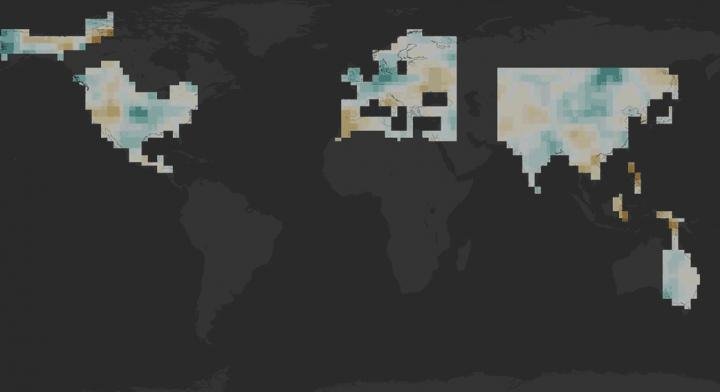Using clues from tree ring atlases, historical rain and temperature measurements, and modern satellite-based soil moisture measurements, researchers found a data "fingerprint" showing greenhouse gases affected drought as early as the 1900s. Photo by LK Ward/NASA Goddard
May 2 (UPI) -- The human impact on today's environment may have been happening a lot earlier than some people think.
Humans have been creating atmospheric particles and greenhouse gases that contributed to worldwide droughts since the early 20th century, according to a study published Wednesday in Nature.
The researchers measured soil moisture using a Palmer Drought Severity Index and drought atlas calculated by tree rings. The atlases could estimate when and where droughts occurred.
"If you look at the fingerprint, you can say, 'Is it getting dry in the areas it should be getting drier? Is it getting wetter in the areas it should be getting wetter?'" said Kate Marvel, an associate research scientist at Columbia University and study lead author, in a news release. "It's climate detective work, like an actual fingerprint at a crime scene is a unique pattern."
They compared the results of those data to model predictions with atmospheric conditions that resembled 1850. During that time, the Industrial Revolution elevated the level of air pollution and greenhouse gases, causing a global warming effect.
"These records go back centuries," Marvel said. "We have a comprehensive picture of global drought conditions that stretch back way into history, and they are amazingly high quality."
But between 1950 and 1975, the researchers say, the environment breifly cooled down with increased use of aerosols, smoke, soot, sulfur dioxide and other particles which blocked sunlight from warming the earth.
"Climate change is not just a future problem," said Ben Cook, a climate scientist at Columbia University and study co-lead author. "This shows it's already affecting global patterns of drought, hydroclimate, trends, variability -- it's happening now. And we expect these trends to continue, as long as we keep warming the world."















